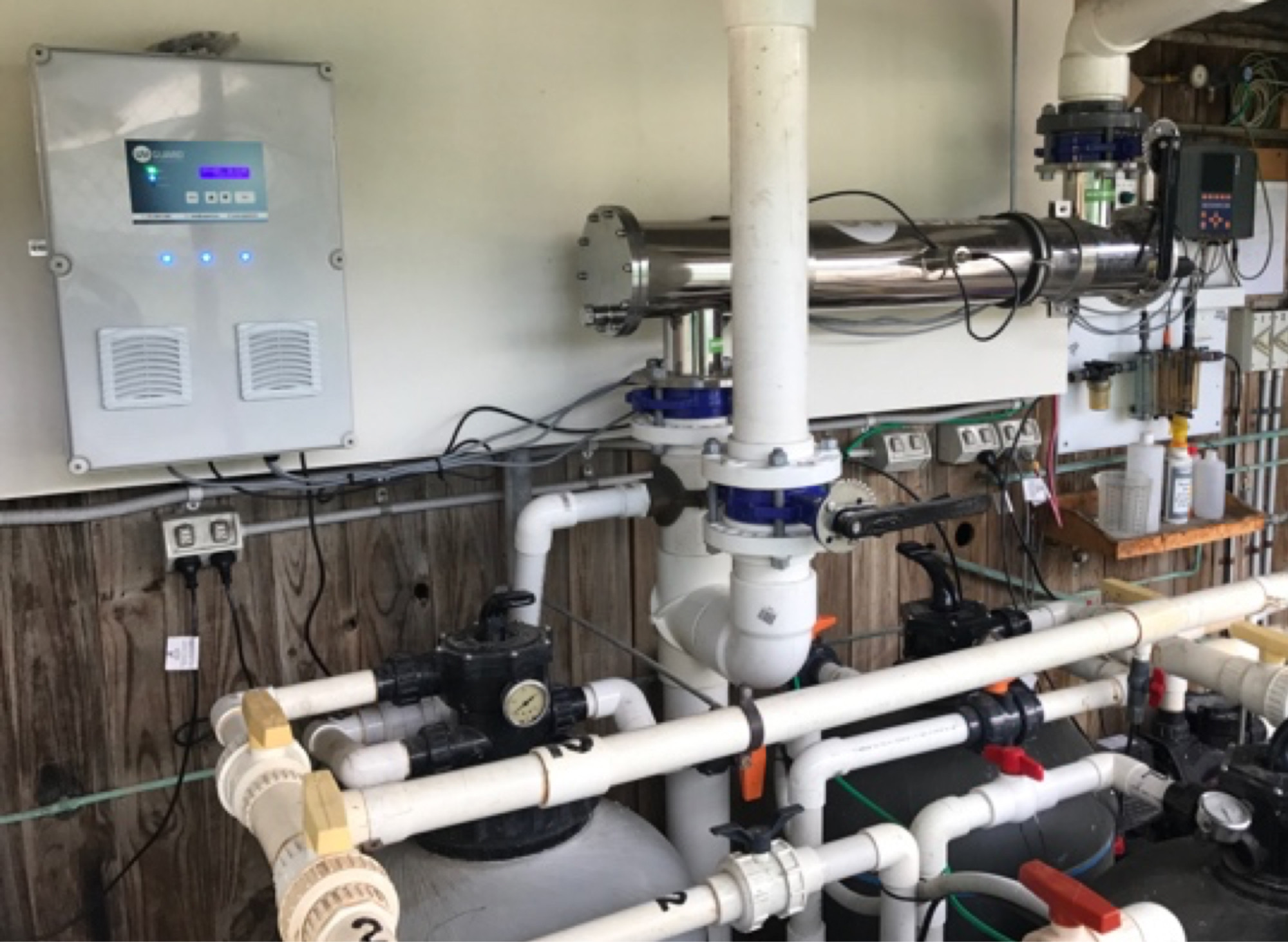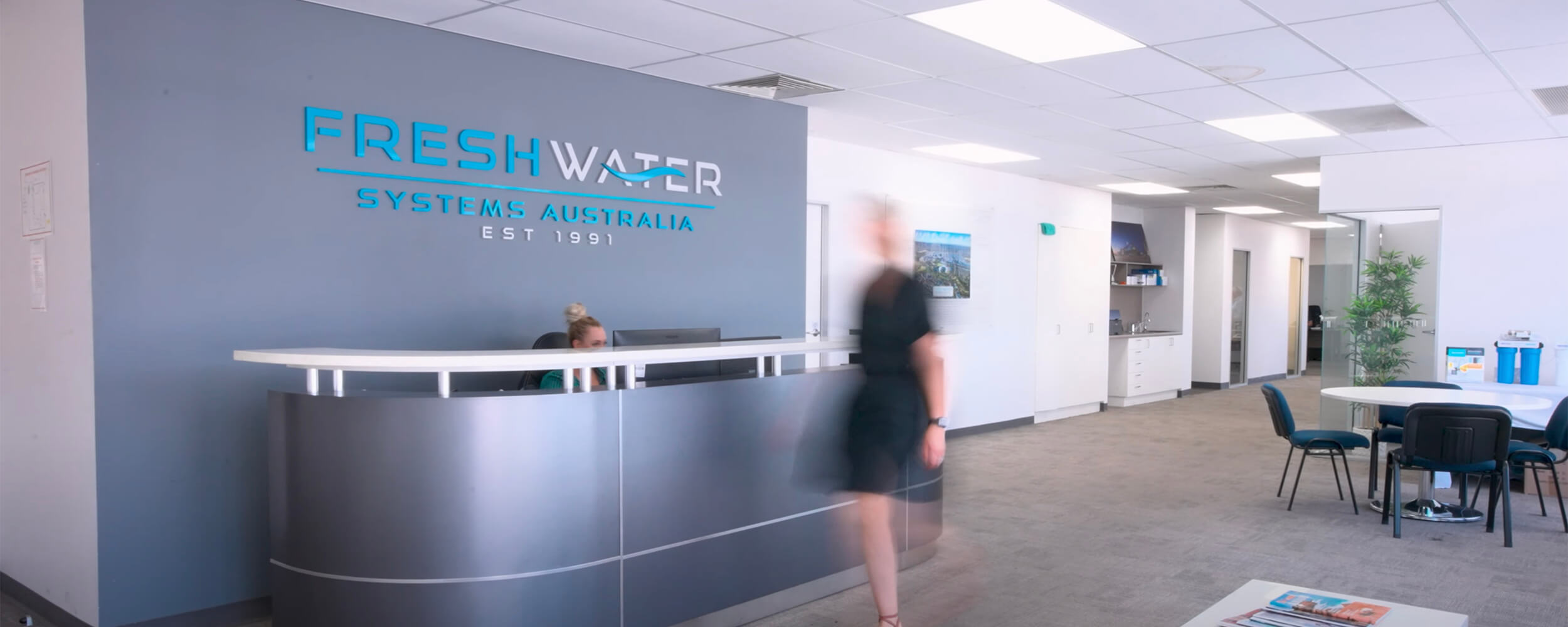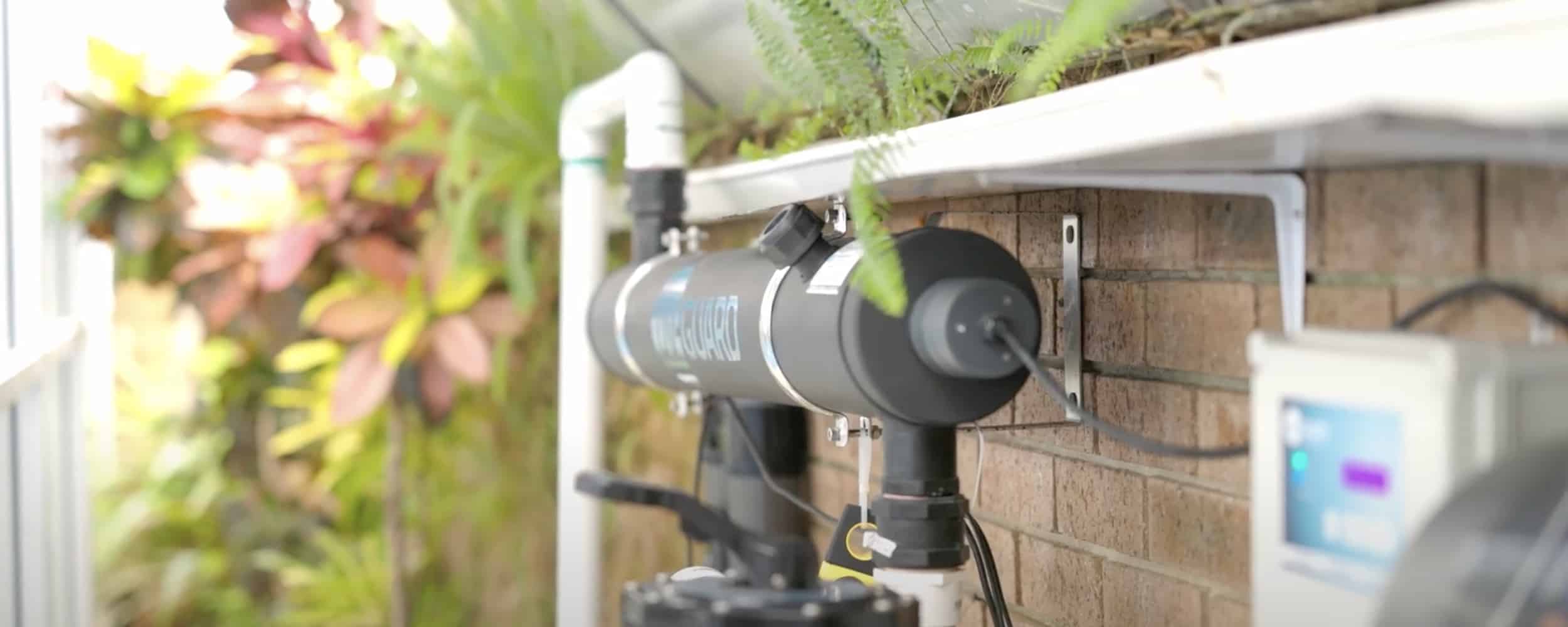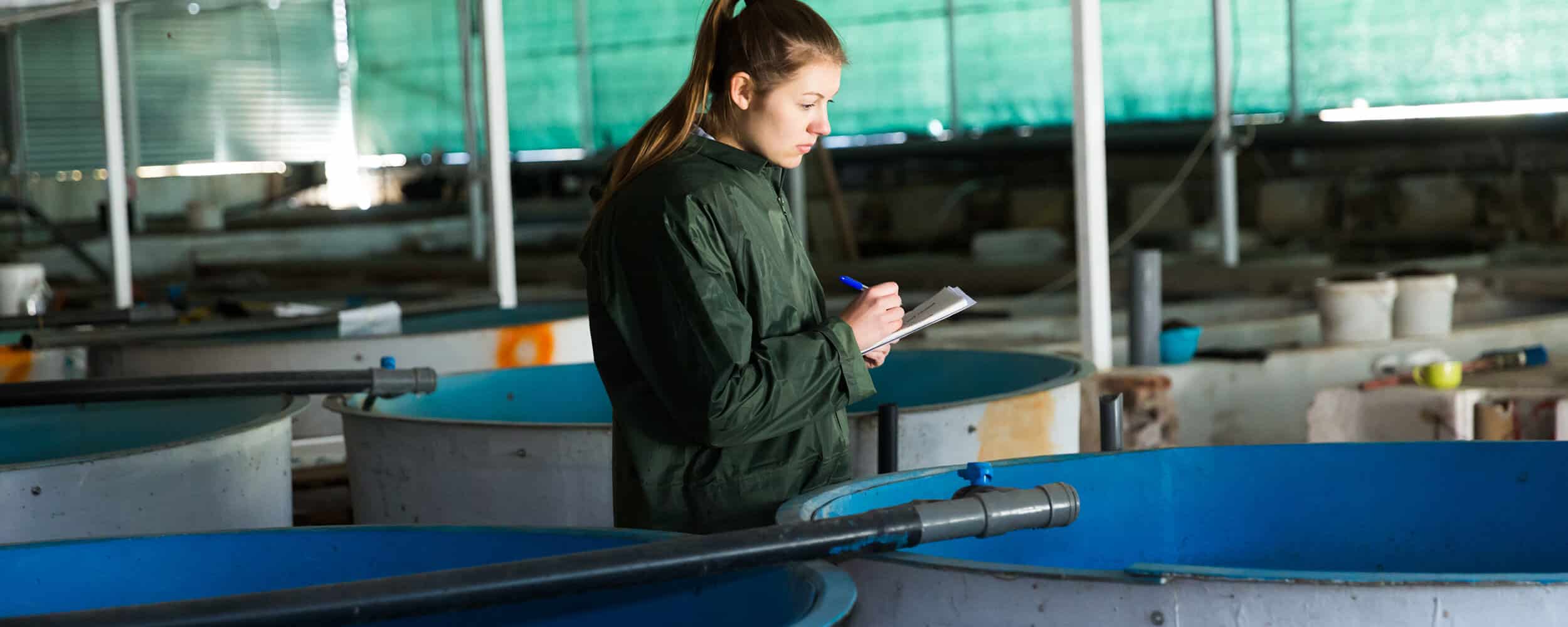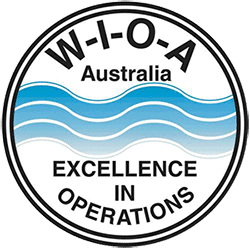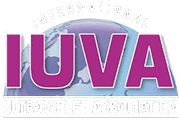Proof low pressure UV treatment is an effective approach for public swimming pools
Applications: Aquatics
Application
25m Public swimming pool
A 25m public swimming pool was struggling to implement consistent reductions in chloramine (combined chlorine) levels – especially during peak swimming periods.
In addition, enrolments at their Learn to Swim classes had failed to increase for the past 2 years due to parental concerns about allergic reactions to chloramines such as trichloramines.
The Challenge
High chloramine levels
Maintaining water quality is challenging at public swimming pools because of the large numbers of people using the pool each day. Chlorine treatments are the most common way to control harmful pathogens and keep the water clean. The problem is, when free chlorine is mixed with perspiration, urine and oils (e.g. sunscreen and deodorant) chloramines are formed.
It’s the chloramines that cause the nasty “chlorine” smell in swimming pools. They are also responsible for sore eyes, skin irritations, asthma attacks and the rapid corrosion of swimming pool equipment.
Public swimming pool operators are required to maintain low levels of combined chlorine due to the associated health risks for swimmers, in addition to regulations that need to be met.
UV Requirements
For this 25m public swimming pool, the UV treatment system needed to:
- Decrease combined chlorine levels to less than 1ppm (parts per million)
- Lower chlorine usage to improve swimmer comfort and reduce allergic reactions
- Handle flow rates of 54m3
- Support easy installation into existing infrastructure
UV-Guard’s Solution
The product specified: UVG X3-245
The UVG X3-245 system utilises three, 240W low pressure high output amalgam UV lamps to achieve a minimum UV dose of 60 mJ/cm2 at the required flow rate.
Low pressure UV lamps are not conventionally used for large scale swimming pool treatment. Instead, medium pressure UV systems have been the industry’s preferred choice.
While medium pressure UV disinfection systems have their place, research conducted in Australia and overseas is re-writing conventional thinking. There is growing evidence that low pressure UV disinfection systems are delivering similar results while providing greater energy efficiencies.
Benefits of the low pressure UVG X3-245 over an equivalent medium pressure UV system:
- Three times more efficiency – less power required to achieve an equal UV dose
- Twice the lamp life – fewer replacements reduces disposal and maintenance costs
- Less risk of overheating during intermittent flow – reduces the risk of premature lamp failure
Due to the compact size and customised inlet and outlet connections, the UVG X3-245 was easily retrofitted into the existing plumbing infrastructure and plant room. UV intensity monitoring was provided and is displayed on the user friendly digital display. This allows the swimming pool operations staff to perform quick checks on the UV output, water quality and potential quartz tube fouling.
The Results
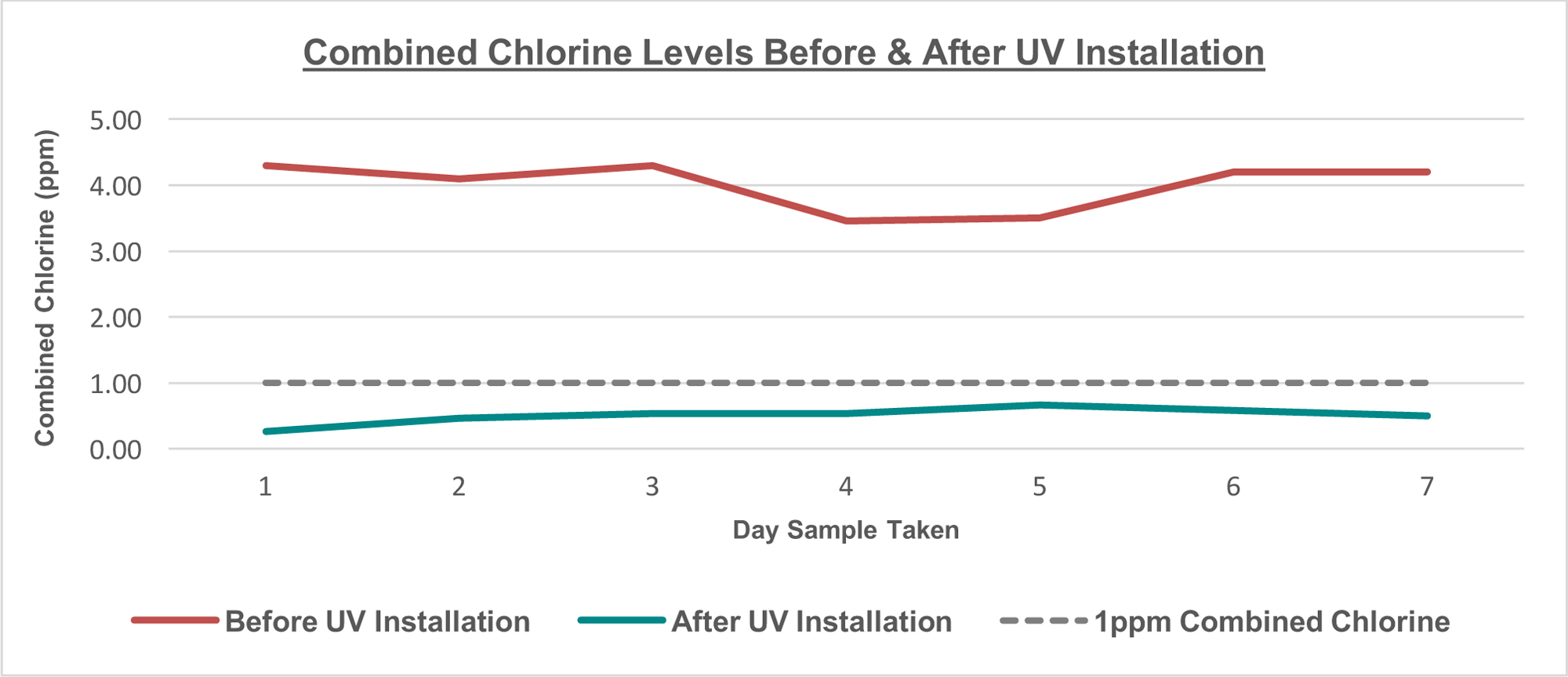
The UVG X3-245 consistently reduces combined chlorine levels to less than the required 1ppm, with average concentrations of less than 0.5ppm. Approx. 90% combined chlorine reduction has been recorded since the installation of the low pressure UV system, reducing the amount of chemicals in the water.
Both pool users and the swimming pool operators have noticed a vast improvement in water and air quality.
For assistance in designing a water treatment system that meets your aquatic application, contact one of our specialist engineers. We have the expertise and products to assist you with swimming pool treatment, spa water treatment, aquatic play pad water treatment and wading pool treatment.
Freshwater Systems Australia Case Study – UV Guard
Discover how Freshwater Systems Australia and UV Guard's strategic partnership drives success in delivering water treatment solutions across healthcare, pharmaceutical, and domestic industries. Learn about our collective technical expertise, and commitment to meeting stringent water quality guidelines.
Stopping the spread of viruses in aquaculture research facility
The aquaculture facility had multiple research stations all independently researching different fish species at the same time, and each one of these stations required its own UV system to treat the water entering that specific area. Additionally, all seawater entering the research facility needed to be treated. All UV systems needed to be selected to achieve minimum UV doses to achieve sufficient inactivation of viruses such as white spot.
Proof low pressure UV treatment is an effective approach for public swimming pools
A 25m public swimming pool was struggling to implement consistent reductions in chloramine (combined chlorine) levels – especially during peak swimming periods. In addition, enrolments at their learn to swim classes had failed to increase for the past 2 years due to parental concerns about allergic reactions to chloramines such as trichloramines.
Get in touch
This website has lots about us.
But it’s your needs that matter most.
Let’s talk.
Newsletter
Stay up-to-date with our very latest news, technology, offers and events.


